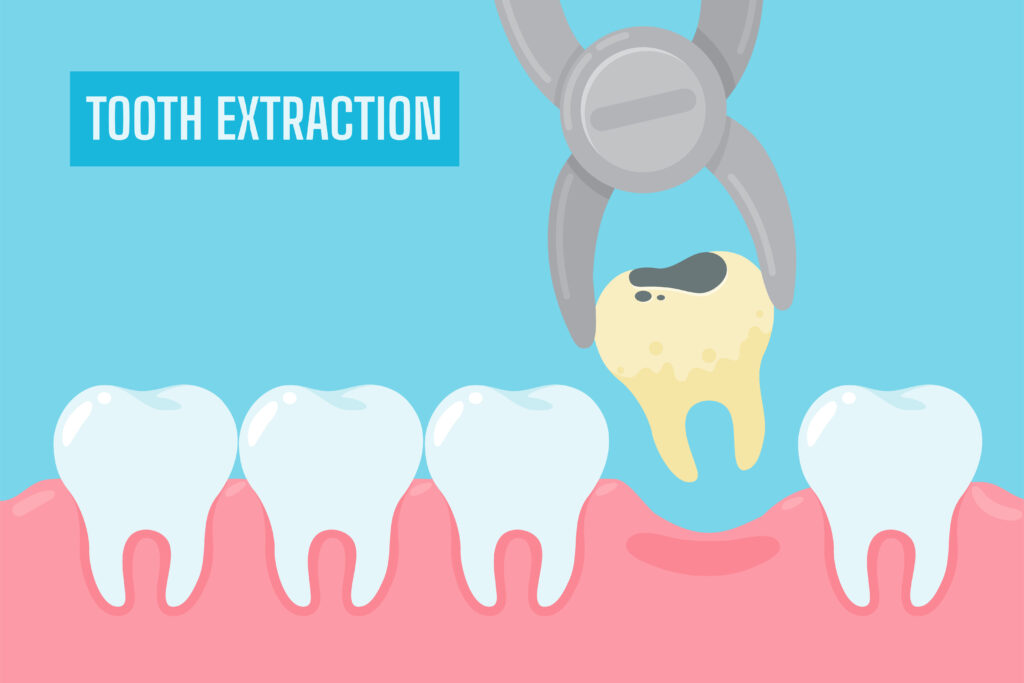If your dentist has mentioned tooth extraction, you might be wondering if there are other options available. The good news is that modern dentistry offers several alternatives that can help save your natural tooth. Let’s explore these options and understand when tooth preservation is possible and beneficial.
Understanding Your Options Before Extraction
Before considering extraction, it’s crucial to understand that your natural teeth are invaluable. They maintain proper jaw alignment, support healthy bone structure, and provide optimal chewing function. Modern dental techniques have made it possible to save teeth that might have been extracted just a few decades ago.
Root Canal Treatment: The Most Common Alternative
When dealing with severely infected or damaged teeth, root canal therapy often provides an excellent alternative to tooth extraction. During this procedure, dentists:
Remove infected pulp tissue
Clean and disinfect the root canals
Fill the space with special material
Place a crown for protection
Success rates for root canal treatments exceed 95% when performed by experienced professionals, making it a reliable option for tooth preservation.
Dental Crowns: Protection and Restoration
For teeth with significant structural damage but healthy roots, dental crowns offer a practical solution. These custom-made caps:
Cover and protect damaged teeth
Restore normal appearance
Improve tooth strength
Prevent further deterioration
Modern crowns are designed to match your natural teeth perfectly, providing both functional and aesthetic benefits.
Advanced Periodontal Treatments
When gum disease threatens tooth stability, several periodontal treatments can help:
Deep Cleaning (Scaling and Root Planing) This fundamental treatment removes bacteria and tartar below the gum line, helping to:
Reduce inflammation
Promote gum healing
Prevent bone loss
Stabilize loose teeth
Gum Grafting Procedures For receding gums that expose sensitive root surfaces, grafting can:
Cover exposed roots
Strengthen gum tissue
Prevent further recession
Reduce sensitivity
Bone Regeneration When bone loss occurs due to periodontal disease, regenerative procedures can:
Rebuild lost bone tissue
Improve tooth stability
Prevent tooth loss
Support long-term oral health
Conservative Restoration Options
Inlays and Onlays These custom-made restorations provide a middle ground between fillings and crowns:
Preserve more natural tooth structure
Offer excellent durability
Provide precise fit
Look completely natural
Dental Bonding For minor damage or small cavities, bonding offers a conservative solution:
Requires minimal tooth preparation
Can be completed in one visit
Matches natural tooth color
Costs less than other options
Treatment Options for Traumatized Teeth
- Repositioning of displaced teeth
- Splinting to stabilize mobility
- Immediate pulp protection
- Monitor for complications
Making the Right Decision
Factors to Consider Several elements influence whether tooth preservation is viable:
- Extent of damage or decay
- Bone support quality
- Overall oral health
- Long-term prognosis
- Cost considerations
Professional Evaluation Work with your dental team to:
Get comprehensive examination
Discuss all available options
Understand treatment timeline
Review success rates
Cost Comparison and Insurance
While preservation treatments might seem expensive initially, they often prove more economical long-term:
Initial Treatment Costs vs. Long-term Value
- Compare treatment options
- Consider maintenance requirements
- Factor in replacement costs
- Review insurance coverage
Preventive Strategies for Long-term Success
Maintaining treated teeth requires commitment:
Daily Care Routine
Proper brushing technique
Regular flossing
Using recommended products
Following dietary guidelines
Professional Maintenance
Regular check-ups
Professional cleanings
Early intervention
Monitoring treatment success
When Extraction Might Be Necessary
Sometimes extraction remains the best option:
Severe trauma beyond repair
Advanced periodontal disease
Non-restorable decay
Strategic orthodontic planning
Success Stories and Statistics
Research shows that preserved natural teeth can last a lifetime with proper care:
90% success rate for well-maintained root canals
85% survival rate for properly crowned teeth
80% success rate for periodontal treatments
Finding the Right Dental Professional
Choose a dentist who:
Prioritizes tooth preservation
Uses modern techniques
Offers comprehensive care
Provides clear communication
Future Outlook
Emerging technologies continue to improve tooth preservation options:
- Regenerative procedures
- Bioactive materials
- Minimally invasive techniques
- Advanced imaging systems
Saving your natural alternatives to tooth extraction often provides the best long-term outcome for your oral health. With modern dental techniques and proper care, many teeth that might have been extracted in the past can now be preserved successfully. Consult with dental professionals who prioritize tooth preservation to explore all available options before deciding on extraction.
Remember, each situation is unique, and what works best depends on individual circumstances. The key is working with experienced professionals who can guide you through the decision-making process and provide the most appropriate treatment for your specific case.
Would you like me to expand on any particular aspect of tooth preservation or provide more specific information about any of these treatments?

